Showing 37–48 of 50 results

This study, in an ethono-historical perspective, explores the multi linear evolution of Sakti worship in Orissa: from the pre-/protohistorical times to the late medieval epoch, and its continuity into the modern period with contextual focus on its probable genesis, historical development, festivals, ritualistic patterns, and cultural sources including myths, legends and folklore.
In the Hindu world-view, Shakti is the Mother of the Universe: the highest primal power. She is, accordingly, the all-pervading, intagible energy principle that propels the cosmos and its endless human dimensions with the life-throbs of activity and culture. Many are her songs, countless her stories, numerous her names. Worship of Shakti, as a pan-Indian phenomenon, predates Sanskritic influences of every kind. Combining his extensive fieldwork with diverse published and unpublished sources: archaeological, historical and religious, Francesco Brighentis study traces its presence in Orissa. Which, perhaps, provides the best paradigm of an age-old Goddess cult, deeply rooted in the autochthonous religious traditions of Eastern India. It is the first, all-encompassing study, in an ethono-historical perspective, exploring the multilinear evolution of Shakti worship in Orissa: from the pre-/proto- historical times to the late medieval epoch, and even its continuity into the modern period with contextual focus on its probable genesis, historical development, festivals, ritualistic patterns, and cultural sources including myths, legends and folklore. The book also incorporates, besides a description of important Shakta centres in Orissa, a study of the Divine Mothers iconographic features in Her multifarious manifestations. Together with around hundred illustrations highlighting the varied representations of Shakti in sculpture, this study will interest not only the scholars of archaeology, history and religion, but historians of art as well.

Sharika Devi, the chief disciple of Swami Lakshman Joo, is a modern-day saint of Kashmir Saivism. A many-splendoured personality, she was constantly absorbed in God-consciousness while performing her worldly duties. This volume reminisces of her spiritual powers.
Kashmir has a long tradition of yoginis (female saints) and poetesses from ancient times. The life of Yogini Sharika Devi is a witness to this unbroken tradition till the twentieth century. This book delves into the life of Yogini Sharika Devi, who was always absorbed in spiritual practice and in serving her guru, Swami Lakshman Joo of Ishwer Ashram of Ishber, Srinagar, Kashmir. Being the chief disciple of Swamiji, Deviji was well focused on her sadhana and was devoted to the mantra of silence for her spiritual prosperity.
Thus she is one of the women saints of Kashmir Saivism. An ideal disciple of her Gurudeva, Deviji was a many-splendoured personality, constantly absorbed in God-consciousness while performing her worldly duties. A jivanamukta, as enunciated by her Gurudeva, she wholeheartedly dedicated her entire life to the service of her Master with single-minded devotion. Though she led a simple life, many were witness to her spiritual powers while she was alive.
This volume, being brought out at the centenary celebrations of her birth, is a compilation of tributes from various people who knew Sharika Devi from close quarters, and who were a witness to her compassion and spiritual powers on numerous occasions. A valuable part of the book is Sharika Devis own contribution to it in the form of her mystic poems. An introduction by the internationally known scholar of Kashmir Saivism, Bettina Sharada Bäumer, makes the book invaluable.

The book employs the multi-disciplinary methodologies of art historical interpretation to contextualise nearly the whole range of Saptamatrka icons within the larger historical evolution of accultured Brahmanical religion, mythology, theology and cultic developments.
The worship of Saptamatrika; the seven Mother Goddesses (or the seven Saktis, the divine feminine powers), is over a millennia and half old, pan-Indian phenomenon. And, over the centuries, the Matrika concept has come to have varied ideational, literary, visual and ritualistic manifestations which not just interconnect the totality of Brahmanical and non-Brahmanical religious traditions, but are integral components of the diverse historical processes of Indian society. A reputed scholar of art history here offers an insightful iconological study of Saptamatrika divinities: the Brahmanical goddesses found invariably as a single collective whole, consisting literally of seven (though sometimes eight or more) female deities, variably accompanied by different forms of Shiva, and Ganesha or Skanda. Employing the multidisciplinary methodo-logies of art historical interpretation, including the recent feminist interventions, Dr. Panikkars inquiry contextualises nearly the whole range of Saptamatrika icons within the larger historical evolution of accultured Brahmanical religion, mythology, theology and concomitant multifarious cultic developments. Also clarifying some of the basic principles of Brahmanical iconic tradition, his study has, for the first time, exceeded the accepted Art Historical procedures by incorporating the questions of class conflict, gender representations and ideology within the iconological discourse and has, thus, advanced the frontiers of Art Historical practice. It is a compelling, painstakingly researched work growing from the authors indepth survey of diverse Saptamatrika sculptures and an astonishing mass of both primary textual sources and research publications of more recent years. And, yet more significantly, it is enlivened with exquisite visual material: comprising nearly 200 photographic reproductions.
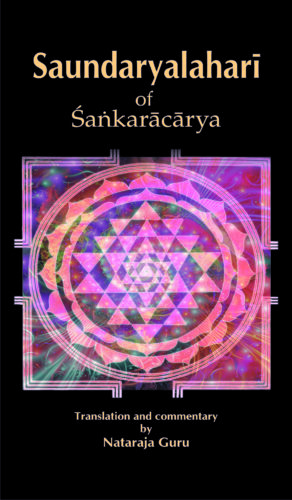
This detailed commentary views the Saundaryalahari compilation of 100 verses in praise of the Devi as Advaita Vedanta itself. The absolute joy of Advaita is presented in a pictorial language, subjectively as ananda, and objectively as saundarya.
The Saundaryalahari has fascinated and puzzled generations of scholars and laypersons; subject to continuing study and debate, till today, such details as the authorship of the 100 verses named the Saundaryalahari remain a matter of contention, particularly among scholars. While some attribute it to Shankara, others argue that the Saundaryalahari’s verses in praise of the Devi cannot have been authored by this staunch Vedantin; some argue that its value is essentially in the realm of what is loosely called “tantra,” while others extend the significance of the Saundaryalahari to include the preoccupations of Vedanta. Nataraja Guru is unequivocal in his belief that none other than Shankara could have composed this masterpiece of mystical poetry and identifies internal evidence in the verses themselves to support this view. The detailed commentary views the Saundaryalahari as Advaita Vedanta itself. The absolute Joy of Advaita is presented in a pictorial language, subjectively as ananda, and objectively as saundarya.

This detailed commentary views the Saundaryalahari compilation of 100 verses in praise of the Devi as Advaita Vedanta itself. The absolute joy of Advaita is presented in a pictorial language, subjectively as ananda, and objectively as saundarya.
The Saundaryalahari has fascinated and puzzled generations of scholars and laypersons; subject to continuing study and debate, till today, such details as the authorship of the 100 verses named the Saundaryalahari remain a matter of contention, particularly among scholars. While some attribute it to Shankara, others argue that the Saundaryalahari’s verses in praise of the Devi cannot have been authored by this staunch Vedantin; some argue that its value is essentially in the realm of what is loosely called “tantra,” while others extend the significance of the Saundaryalahari to include the preoccupations of Vedanta. Nataraja Guru is unequivocal in his belief that none other than Shankara could have composed this masterpiece of mystical poetry and identifies internal evidence in the verses themselves to support this view. The detailed commentary views the Saundaryalahari as Advaita Vedanta itself. The absolute Joy of Advaita is presented in a pictorial language, subjectively as ananda, and objectively as saundarya.
“प्रस्तुत ग्रन्थ “शक्ति उपासना” का वैभव राजानक महेश्वर राज़दान ने सायुज्य याेग के लिए शारदा लिपि के अन्तर्गत 126 दिव्य-नामावली के गुंथन में समर्पित किया है। चिन्मयी भैरवी के इस महामन् त्र काे ईश्वरस्वरूप स्वामी लक्ष्मण जी महाराज ने 1934 ईस्वी से संजाेए रखा अाैर तत्पश्चात् उनकी परम शिष्या याेगिनी शारिका देवी जी काे प्रदान किया। तत्पश्चात् सुश्री याेगिनी प्रभाजी ने इसे संजाेए रखकर देवनागरी लिपि में प्राेफेसर पुष्पजी से रूपान्तरित करवाकर महती कृपा की है। शक्ति उपासना के अन्तर्गत इच्छा, ज्ञान, क्रिया, शक्ति के नादानुसन्धान का उच्चारण क्रमिक है। चिन्मयी भैरवी शिव तथा शिवानी का एकात्म भाव स्वरूप है, अतः ित्रक शास् त्र की दृष्टि में सर्वाेपरि है, क्याेंकि सर्वव्यापी शक्ति विद्या-स्वरूपिणी है। प्रकाश तथा विमर्श सनातन शक्ति का ही प्रसार है। यामी शक्ति विश्वात्मिका हाेने के साथ अमृतेश्वरी का रूप धारण करके भक्ति, याेग तथा दैवी सम्पदा की अाेर स्फुरित हाेती है। अाद्या शक्ति चिन्मयी भैरवी निरन्तर स्फुरण करती है। शक्ति उपासना में ित्रपुर भैरवी श्रीप्रदा ज्ञान के द्वारा ज्ञाता के रूप में तथा ज्ञेय काे एक सूत्र में पिराेती हुई अमृत का पान कराती है। देवी का वरदान एवं सन्धिनी–ह्लादिनी शक्ति की अभय-मुद्रा उमा से कामेश्वरिप्रिया का प्रसार ही है। भुवन-मालिनी का रूप धारण करती हुई माेक्षप्रदा अमृतेश्वरी साधक के लिए ज्ञानाङ्ग एवं मन् त्र दीपिका है। शिव तथा शिवानी का एकात्मस्वरूप जानना मृत्यु से माेक्ष प्राप्ति का शाक्त अनुसन्धान है। “

The work it two volumes explores the physical and emotional interaction between Siva and Parvati as represented in sculptural works in the Indian subcontinent and examines a host of images supported by classifications of Siva-Parvati figures in texts like the Saiva Agamas and iconographic studies of the past decades. The images are related not only to religious beliefs but also iconographical.
The work explores the physical and emotional interaction between Shiva and Parvati as represented in sculptural works in the Indian subcontinent. In two volumes, it examines a host of images supported by classifications of Shiva-Parvati figures in texts like the Shaiva âgamas and iconographic studies of the past decades. It surveys an astounding sculptural diversity of Shiva-Parvati icons particularly forms of seated or standing Umasahita-murti, standing Alingana murti and Tantric forms of the deities. The images are related not only to religious beliefs but also iconographical research for instance, linking depiction of figures in certain postures and areas to their places of origin. With numerous charts, it highlights iconographical peculiarities, distribution and popularity, and identifies similarities and differences over periods of time and areas of making. Referring to sculptural collections in museums and private acquisitions, the painstaking research examines the sculptor’s technique of combining aesthetic harmony and beauty with the sacred in ontological symbols as of Umamaheshvara. There is a detailed mythological background concentrating on the individual character of Shiva and Parvati in their mutual relationship; their marriage and conjugal life; explicitly Shaiva motifs where the major concern is with the all-important Lord Shiva; and the physical and emotional interaction of Shiva and Parvati as man and wife. An entire volume is devoted to reproduction of the rich representative sculpture studied through more than 570 black and white photographs and over 160 colour plates. The volumes will prove useful for scholars of Indological art and art connoisseurs as well as general readers.
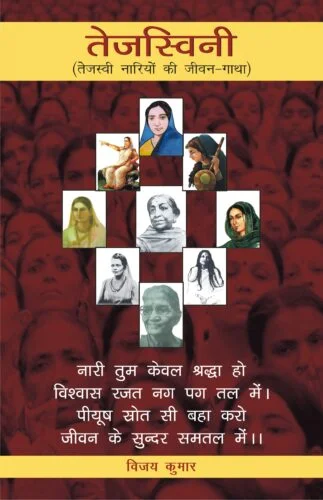
This book records the contribution and sacrifice of sixty-seven great Indian women from various walks of life. These short biographical accounts capture in letter and spirit the strength and power of women in various fields like education, music, dance, literature, sports, service, religion and spirituality.
Tejasvini is an inspirational handbook that records the contribution and sacrifice of sixty-seven great Indian women from various walks of life. These short biographical accounts capture in letter and spirit the strength and power of women from eleventh century ce to our present times. This book surveys the role of women in various fields like education, music, dance, literature, sports, service, religion and spirituality that the history has witnessed time and again.
This book also records the supportive role of women during revolutionary periods. The sacrifice of women during renaissance movements and in freedom struggle especially during the Revolt of 1857 is a highly motivating remainder of their bravery and valour. The lives of these women, marked by discipline and strengthened by ethical codes, have made them immortal beings that will serve as the guiding spirit for generations to come. There is a place in this book highlighting the lives of many lesser or unknown warriors, scholars, artists, devotees and others.
This book is expected to inspire young minds, especially the women of modern India.
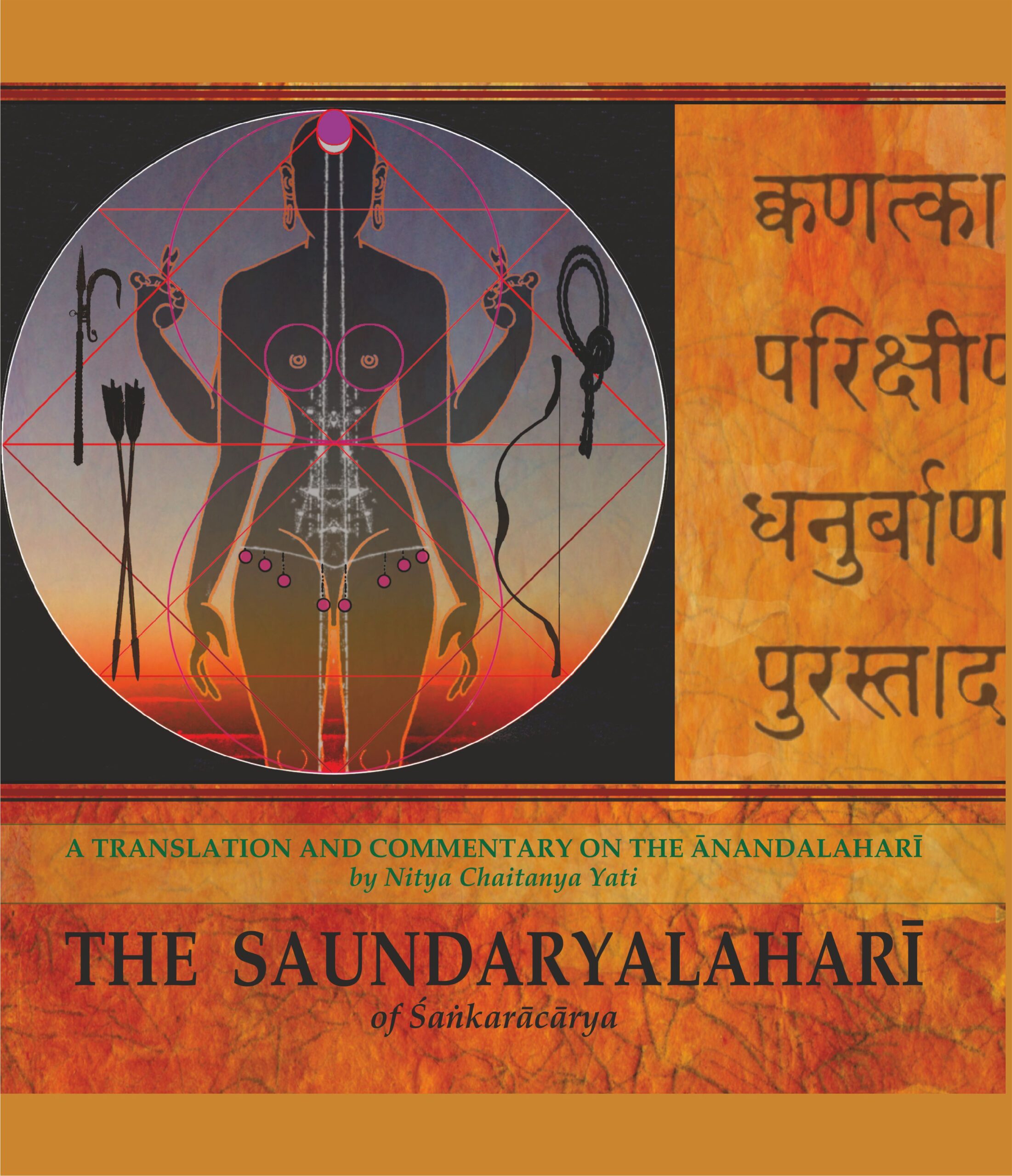
This book comprises the first part of Saundaryalahari, popularly known as Anandalahari. The text is a protolinguistic composition using a pictorial language of images. The absolute joy of Advaita is presented subjectively as ananda and objectively as saundarya. For the contemplation of the Shri Chakra, 53 meditations have also been provided.
This book comprises the first part of Saundarya Lahari (The Upsurging Billow of Beauty), popularly known as Ananda Lahari, covering the first forty-one verses.
This poetic work has fascinated generations of scholars and laypersons with the sublime beauty of the verses in praise of the Devi, but also puzzled people by the authorship of Shankara. The text is a protolinguistic composition using a pictorial language of images. Beauty, elevated to the highest level, provides content to the otherwise abstract notion of the Absolute. The absolute joy of Advaita is presented subjectively as ananda and objectively as saundarya.
This tenth-century hymn to the Devi is a poetic restatement by the philosopher Shankara of his strict Advaita Vedanta monism. In a compelling series of verses, Shankara draws in many strands of Indias heritage and braids them into a vision of luminous, transcendent Beauty.
The present commentary by Guru Nitya Chaitanya Yati grew out of his class of intimate meditations. He has integrated the academic disciplines of aesthetics, linguistics, and psychology with contemplation into a comprehensive study of creative manifestation. The heterodox Tantric Shri Vidya schools are centered on the realistic worship of the Devi or Goddess and the Shri Chakra. Keeping in line with contemplation, the Appendix provides 53 meditations on the Shri Chakra.
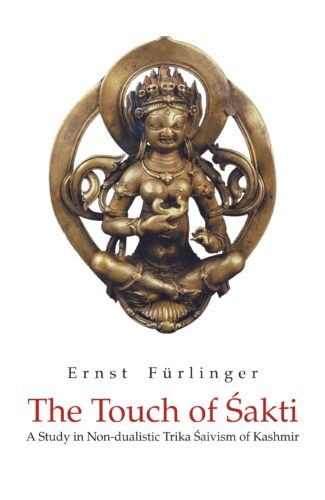
This volume presents an overview of the historical development of the Kashmirian Saiva traditions, especially of the non-dualistic system, Trika, and deals with the bodily experience of the transcendent power, the Sakti, in the context of the Saiva Kundalini-Yoga.
The Kashmirian Shaiva tradition in its non-dualistic form in particular is one of the richest philosophical traditions of India that have survived to the present day. This book by the noted scholar, Dr Furlinger, deals with the bodily experience of the transcendent power, the Shakti, in the context of the Shaiva Kundalini-Yoga. In an insightful introduction, the scholar presents an overview of the historical development of the Kashmirian Shaiva traditions, especially of the non-dualistic system, Trika, made famous by the work of its famous proponent, Abhinavagupta. He studies the theme of shaktisparsha in selected texts of non-dualistic Trika Shaivism of Kashmir, focusing on Utpaladeva’s Shivastotravali of the tenth century and Abhinavagupta’s Tantraloka of the eleventh century. The texts are analysed along with a noted commentary associated with each to shed light on the different contexts and meanings in which the word sparsha occurs in connection with Shakti, the divine power, revered as the Goddess. The study examines sparsa as one of the highest stages in the spiritual ascent in the Tantraloka and its corresponding description in the Shivastotravali. The difference in the notion of sparsa in the two texts is also brought out. It thus reveals the liberating and critical potential of the non-dualistic Shaiva tradition of Kashmir. The book will interest scholars and students of Indology associated with Indian religious-philosophical traditions.
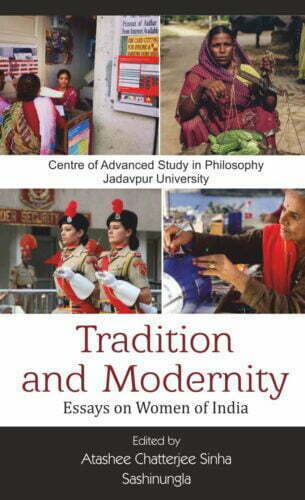
This anthology explores the lived experiences and positioning of women in diverse Indian social, religious and cultural contexts. It deals with issues varying from the intricacies of the gender concepts embedded in contemporary traditionmodernity debates to detailed consideration of women currents of thought, action and life and the problem of understanding that they throw up.
The anthology Tradition and Modernity: Essays on Women of India includes essays ranging from the philosophical and analytical to the descriptive and the explorative and the experimental perspectives. It explores the lived experiences and positioning of women in diverse Indian social, religious and cultural contexts. The essays deal with issues varying from the intricacies of the gender concepts embedded in contemporary traditionmodernity debates to detailed consideration of women currents of thought, action and life and the problem of understanding that they throw up.
While a majority of the papers rightly reflect on the unequal and oppressive situation of the women in highly patriarchal and hierarchical settings, yet there are quite a few which sensitively touch upon the theme of human spirit and the beauty of love and relationships between man and woman in the midst of caste and gender hierarchies. There is reflection on the theme of the growing awareness about the women, environment and development, particularly the relationship between violence of nature and women.
This collection of writings will appeal to readers of all hues as well as students and scholars of culture and religion, in particular of India, gender equality, democracy and difference and feminist theory.

This book contains articles that examine the contribution of women saints from India and abroad and discuss the origin of bhakti, the Bhakti Movement, theris, and bhakti/saint poetesses. Their contribution constitutes a rich tradition of devotional discourse in terms of form as well as content.
This volume comprises articles that examine the contribution of women saints from India and abroad as well. The articles discuss the origin of bhakti, the Bhakti Movement, and bhakti/saint poetesses like Rishika Gargi, theris, Andal, Lal Ded, Akka Mahadevi, Mirabai, Gangasati, Tarigonda Vengamamba, Janabai, Bahinabai, Madhabi Dasi, Hildegard of Bingen, and Julian of Norwich from different regions and religions. Their contribution constitutes a rich tradition of devotional discourse in terms of form as well as content and has survived till now in folk and learned traditions. The articles discuss their voices, visions and sufferings physical and psychological and also the way they transcended them and voiced them in their compositions. Their uniqueness lies in their existence at multiple levels social, poetic, religious and spiritual among others. The volume would interest literary, cultural historians and religious scholars as well as general readers.
| × |
|
Tattvopaplavasimha Carvaka darasana ke katipaya pahalu (???????????????? ??????? ????? ?? ????? ????) 1 x ₹716.00 |
| × |
|
Science and Spirituality 1 x ₹900.00 |